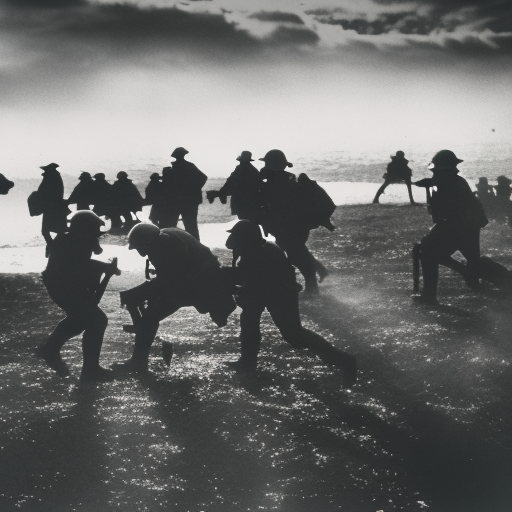Battle of Plymouth: A Fierce Naval Clash during the English Civil War
The Battle of Plymouth was a significant naval engagement that took place during the English Civil War on August 16, 1643. It was fought between the Parliamentarian forces, led by Admiral Robert Blake, and the Royalist forces, commanded by Prince Maurice. The battle occurred off the coast of Plymouth, a strategically important port in southwestern England.
Background:
During the English Civil War, which lasted from 1642 to 1651, the country was divided between supporters of the Parliament (Roundheads) and the Royalists (Cavaliers). Plymouth, a stronghold of the Parliamentarians, was a vital port for the supply of goods and troops. Controlling Plymouth was crucial for both sides, as it provided access to the English Channel and the Atlantic Ocean.
The Royalist Threat:
In 1643, the Royalists, under the command of Prince Maurice, sought to gain control of Plymouth. They believed that capturing the port would severely weaken the Parliamentarian cause. Prince Maurice assembled a fleet of ships, including the flagship “Prince Royal,” and set sail towards Plymouth.
The Parliamentarian Defense:
The Parliamentarians, aware of the Royalist threat, prepared to defend Plymouth. Admiral Robert Blake, a seasoned naval commander, was appointed to lead the defense. He quickly organized a fleet of ships, including the “Triumph,” “Victory,” and “Garland,” to confront the Royalists.
The Battle:
On August 16, 1643, the Royalist and Parliamentarian fleets clashed off the coast of Plymouth. The battle was fierce and intense, with both sides unleashing broadsides of cannon fire. The Royalist ships, with their superior firepower, initially gained an advantage, causing significant damage to the Parliamentarian fleet.
However, Admiral Blake skillfully maneuvered his ships, exploiting their agility and speed. He used his smaller vessels to distract the Royalists while his larger ships closed in for close-quarters combat. The Parliamentarians focused their fire on the Royalist flagship, the “Prince Royal,” aiming to disable it and neutralize Prince Maurice’s command.
The battle raged for several hours, with both sides sustaining heavy casualties. Despite the initial setback, the Parliamentarians gradually gained the upper hand. The “Prince Royal” was severely damaged, and Prince Maurice’s forces were unable to break through the Parliamentarian defenses.
The Aftermath:
Realizing the futility of continuing the fight, Prince Maurice ordered a retreat. The Royalist fleet withdrew, leaving the Parliamentarians in control of Plymouth. The Battle of Plymouth was a significant victory for the Parliamentarians, as it secured their hold on the port and denied the Royalists a crucial strategic asset.
The battle also demonstrated the skill and determination of Admiral Robert Blake, who would go on to become one of the most renowned naval commanders in English history. His tactical brilliance and ability to rally his troops in the face of adversity played a crucial role in the Parliamentarian victory.
Legacy:
The Battle of Plymouth had a lasting impact on the outcome of the English Civil War. By maintaining control of Plymouth, the Parliamentarians ensured the continued flow of supplies and reinforcements, bolstering their position in the conflict. The battle also highlighted the importance of naval power in the war, as control of the seas became a decisive factor in determining the outcome.
In conclusion, the Battle of Plymouth was a pivotal naval engagement during the English Civil War. Admiral Robert Blake’s skillful leadership and the Parliamentarian victory secured their control over the strategically vital port. This battle showcased the significance of naval power and its impact on the outcome of the war.












